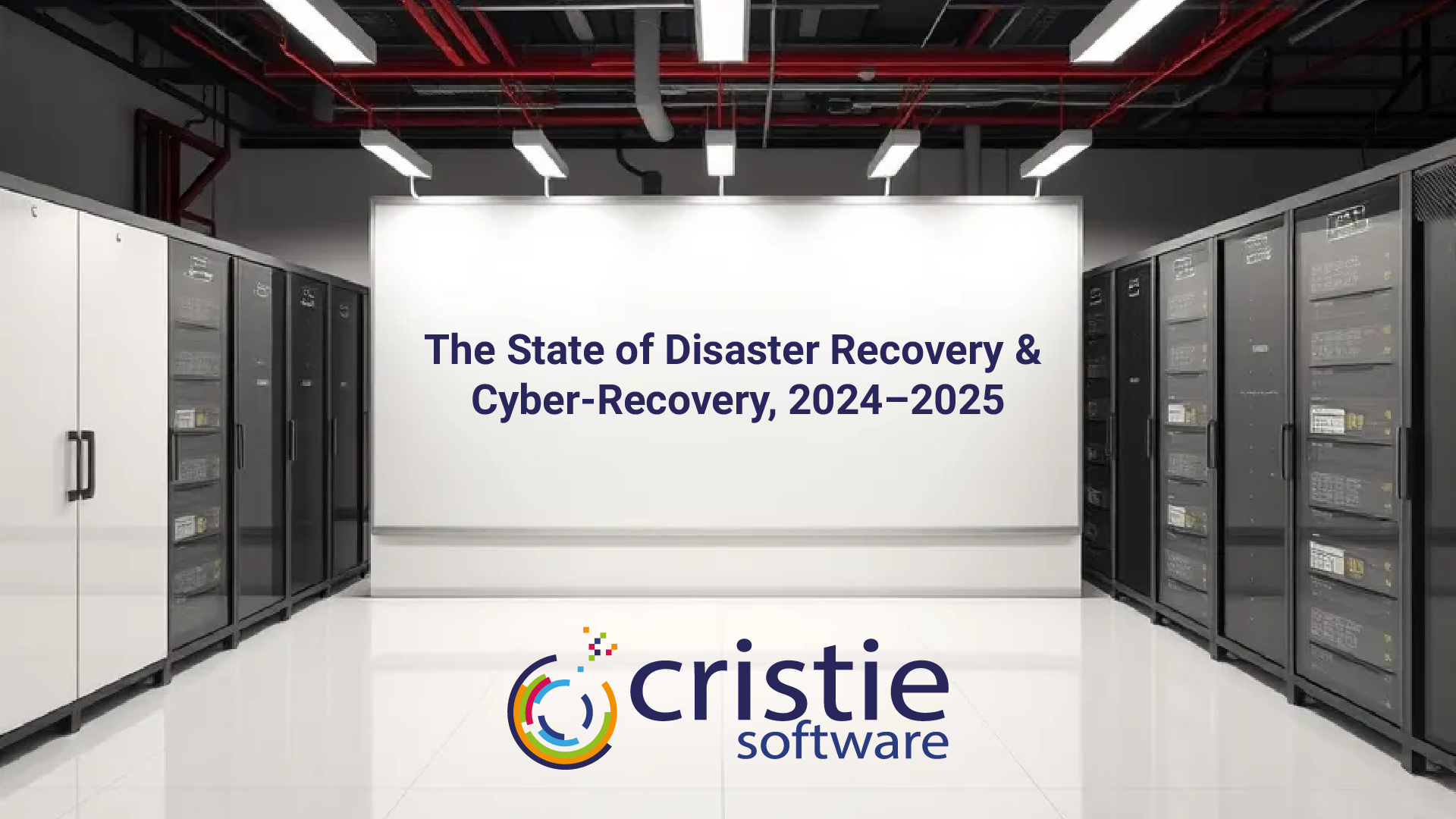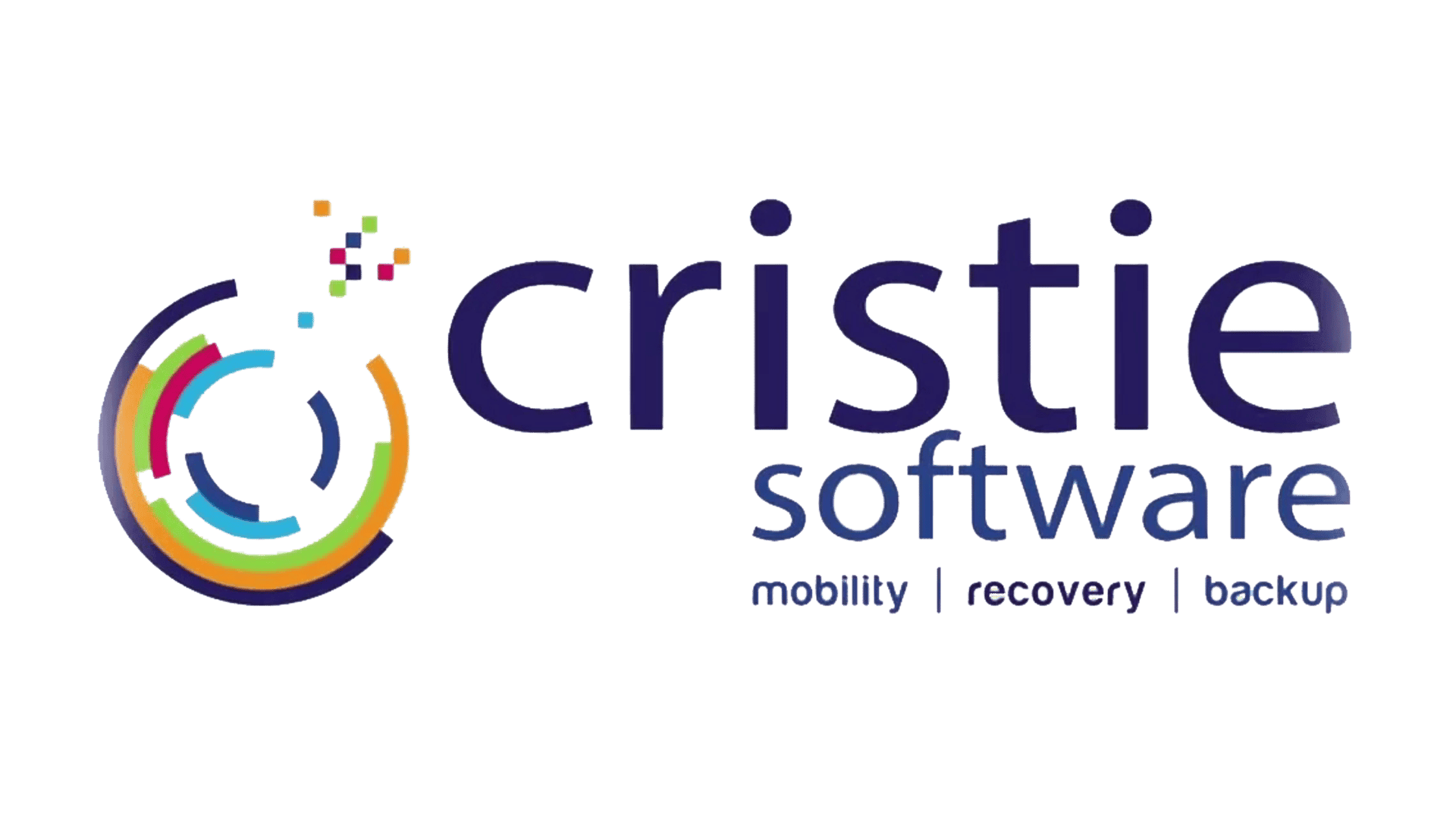
IDC recently published the white paper “The State of Disaster Recovery and Cyber-Recovery, 2024–2025: Factoring in AI” sponsored by Zerto which highlights current trends in disaster protection strategies in the face of growing cybercrime. The paper also presents survey results regarding the adoption of artificial intelligence (AI) within data protection and cyber-resilience solutions. Here we examine the key findings of this report and discuss how system recovery solutions from Cristie Software can help users of backup solutions such as Zerto to address the gaps reported by the respondents to this report.
While backup and recovery (B/R) are foundational to data recovery, a complete disaster recovery solution needs to include the recovery of systems and underlying infrastructure, which in a modern IT environment, invariably involves a hybrid of physical, virtual and cloud platforms. Effective DR may involve moving application services and data to a second site using asynchronous or synchronous data replication, replicated infrastructure, plus application failover/failback processes between these diverse operating environments. CR builds upon B/R and DR processes with additional requirements for malware detection, forensic analysis, cleanroom recovery, and more. For this reason, backup modernization was among the top 3 IT initiatives for respondents to the survey over the next 12 months. When asked about the most important criteria when selecting backup and DR tools, the top response was “breadth of solution” indicating that companies are looking to modernize their entire B/R and DR toolset and processes.
Cristie Software recovery and replication solutions complement B/R solutions like Zerto and other leading solutions from vendors such as IBM, Dell Technologies, Rubrik and Cohesity. Our software works seamlessly with B/R solutions to deliver many benefits.
The IDC survey highlights that IT personnel time and resource availability plus IT skills are in the top 3 biggest challenges organizations face with respect to disaster recovery. Human error was shown to be the biggest reason for data loss. Cristie Software can help to address each of these human factors through features such as automation, recovery orchestration, and the ongoing use of predictive AI.
System recovery time objectives (RTO) differ between organizations and business applications but rarely does system downtime does not equate to revenue loss, therefore the desire to reduce system recovery times featured highly in the survey responses. Meeting internal and external SLAs may require very specific RTOs with regulated industries such as financial services and healthcare having SLAs that incur may penalties if not met. To ensure that system recovery processes are capable of meeting SLAs testing should be a core component of every DR plan. Cristie Software provides several features to assist in recovery testing and verification.
The findings within this report correlate with our experience as customers look to modernize their B/R solutions to support hybrid cloud architectures and multi-cloud environments. Despite the widespread adoption of virtualization, physical systems are still prevalent where application performance is vital, or to support legacy applications, therefore the automation of physical system recovery is an essential feature that organizations should include in their modernization plan. Read the full IDC report sponsored by Zerto here.
Contact the Cristie Software team if you are in the process of addressing any of the challenges highlighted in this article, or to learn more about system replication and our system recovery integration with leading B/R solutions from vendors including IBM, Dell Technologies, Rubrik and Cohesity.

